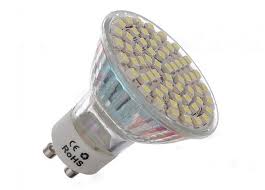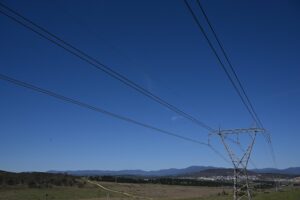Flipping through the UK government’s Energy Saving Trust website highlights the substantial savings households and business have available if they simply used energy more efficiently. This simple idea of doing the same things you do everyday but with less energy is the first and easiest steps in rebuilding our energy systems to be more sustainable. Investing in this idea can be done today and in a sensible fashion. We highlight three energy efficiency areas that are making a huge difference in the way we consume energy and are investable today.
Whereas an incandescent light bulb only convert 10% of its energy into light, light emitting diodes or LEDs have a 90% conversion factor meaning far less energy is needed to produce the same amount of light. Unlike earlier “next generation” compact fluorescent lights, LEDs match the performance (colour gamut, dimmable, instantly on) of traditional lighting while avoiding the use of toxic chemicals and can last years longer. Governments around the world have recognized the enormous waste from using incandescent lights which has led to a growing worldwide phase out of the technology.
The potential energy savings are enormous by switching to LEDs. The US Department of Energy estimated that their country consumes 450 terawatt hours of electricity through incandescent and linear fluorescent lights (office ceiling lights). We estimate that switching all these lights to LEDs could save 228 terawatt hours of electricity annually. The saved energy is equivalent to 90% of Australia’s total annual electricity production or the power from nine Loy Yang power stations. Said differently, if we turned off the equivalent of nine Loy Yang power stations, we would cut the equivalent of nearly half the carbon emissions of Australia.
Our biggest LED exposure is via Acuity Brands, a leading North American lighting solutions provider that reported revenues of over US$2 billion and profits of US$127 million in 2013. The company has no net debt and has reported profits every year since at least 2004.
Chemical free cleaning
As odd as it sounds, many cleaning products use dirty fossil fuels as a key ingredient. Curbing end market consumption of petroleum by-products will shrink aggregate demand and further transform the global energy complex. Done at the commercial scale, chemical free cleaning saves money, increases safety and reduces the environmental impact of an operating company as it fundamentally alters business processes. Just put yourself in the shoes of an occupational health and safety officer who no longer has to train staff on the use of toxic chemicals or a purchasing manager who no longer has to buy and warehouse rooms of hazardous materials.
The best example of such a disruptive application is Tennant Co’s ec-H2O technology which only uses electricity to convert water into an effective cleaning solution. The technology has been adopted by over 4,000 customers on over 40,000 machines after being launched only six years ago. Tennant is our largest exposure to chemical free cleaning. The company was founded in 1870, has no net debt and has increased its annual dividend for 42 consecutive years.
Better fuel economy
Developed nations (except Australia) are forcing mileage standards onto automobile manufacturers. As a result, industry has responded with hybrid and full electric drivetrains and other technological advances. The net result is cars have never been so fuel efficient while maintaining (and perhaps even improving) the driving experience. This has also been accomplished while keeping car ownership affordable. One of the fastest growing advancements in fuel economy are turbo chargers as they are able to improve fuel economy by about 20% and add less cost to the car than hybridisation. While turbo chargers are not a new technology, the precise computer controls and reliability needed for mainstream use has only recently come widely available. At the heart of these technological advancements are the suppliers to the major automobile manufacturers. The incumbent suppliers have the financial resources to invest into research and development and help their customers meet government mandates.
Denso Corp is our largest exposure to improving fuel economy and they are also Toyota’s largest supplier. Incidentally, Toyota remains the largest seller of hybrid cars in the world. Denso has been a publicly listed company since 1951 and operates in 35 countries with 140,000 employees. For the year ending March 2014, the company reported revenues of US$40 billion and has no net debt.
We believe energy efficiency is a lasting investment thematic that is relevant regardless of the broader economic backdrop. It does not matter how the economy is doing as businesses and households will always be interested in saving money. We are trying to demonstrate that while cleantech investing has historically been the realm of technology start-ups with unproven business models, “regular” companies are moving aggressively into the space recognising that innovation coupled with a strong financial position and experience can lead to disruptive advancements and increased differentiation from competitors. For investors this means investments can be made in lower risk companies while maintaining exposure to the secular efficiency/cleantech thematic.
Nathan Lim is International Equities Fund manager Australian Ethical.









